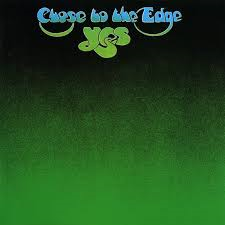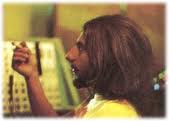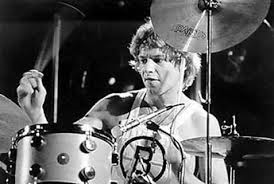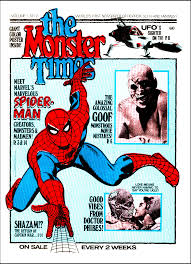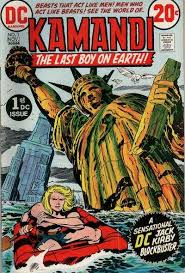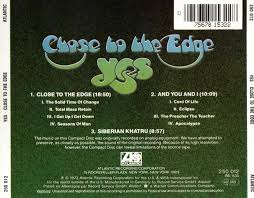Pressing on with my long distance runaround diatribes of the studio albums recorded by one of my favorite bands,Yes while I was growing up – all in celebration of lead maestro Jon Anderson’s 70th birthday and generally the band’s 45th anniversary as well.
We now harken back to late autumn of 1972. The sounds chirping birds and cascading waterfalls evoke passing images of animals grazing in a lush green field on a fragile fragment of earth spiraling on a journey to a new home. A new home that can only exist in peace and tranquility until it’s interrupted by a sonic eruption of contentious symphonic bomb bursts that only an evil Phantom of the Opera behind a monster theater organ could concoct is what I’m trying to describe as the masterpiece five-part movement salute to ‘Close to the Edge”. Yes labored long and hard on this ambitious ingenious beloved classic even while they were touring the UK in support of their previous album, Fragile. For a period of three months, the boys would perform a two-hour show and then rush right back out to Advision Studios to set up recording for the 18 and a half-minute title track. Jon Anderson would request that tents to be set up along with cardboard cut outs of animals to be placed all along the sound room to get a certain ambient vibe going to get the band motivated. Needless to say, Maestro Jon A ‘s National Geographic idea got nixed. Nobody wanted to know which of his socks he was smoking that day.
Ex-Strawbs keyboard player, Rick Wakeman likens the recording process that engineer Eddie Offord utilized when splicing up 30 -40 different sections of analog tape together as putting together a jigsaw puzzle. Even though the band played the title track in its’ entirety in the rehearsal room, Offord insisted that they record the elongated piece of music one minute at a time. The same could be said for the opening of side two, And You and I, where guitarist Steve Howe, practically made the pedal slide guitar, a household name to master outside the arena of glamour bands and tv family pop outfits (this wasn’t your younger brother or sister’s Partridge Family here, folks) .
Nonetheless, persistence and patience paid off in the reward of seeing the album peak at Number 4 in the UK and Number 3 in the US. Sadly, after the mixing of this album, founding drummer Bill Bruford had decided to leave the band while as the band was peaking to its’ infamy to accept an offer from another world renown progressive rock outfit named King Crimson where he would then forge another long-lasting friendship with another popular bass player, John Wetton who in turn would form famous progressive rock super group, U.K. with young Frank Zappa/Roxy Music violinist/keyboardist prodigy Eddie Jobson, before jetting off to form Asia with Geoff Downes and Steve Howe in the early eighties. Bill Bruford would then be replaced in Yes by former John Lennon/Yoko Ono Band drummer, Alan White for the release of their first live three lp, Yessongs and the complimentary 70 mm film of the same name that was filmed over three nights in London’s Rainbow Theater interspersed with some cheesy Roger Dean animation.
Favorite lyrical line: Gold stainless nail torn through the distance of man/As they regard the summit– Siberian Khatru (Anderson/Howe/Wakeman)
Close to the Edge is the fifth album by British progressive rock band Yes. In June 1972, (U.K. release. September 13th was the US release) just as recording ended, drummer Bill Bruford suddenly left the line-up, forcing Yes to find a replacement before starting a new US tour.
Close To The Edge set a trend for Yes of including a single epic song significantly longer than the others which was followed in the later albums Relayer (which featured “The Gates of Delirium”) and Going for the One (1977) (which featured “Awaken”).
The religious influences introduced by Jon Anderson which later formed the basis of Tales From Topographic Oceans are already evident in the music and lyrics of all three tracks on Close To The Edge. Renewal and repetition are other main themes; the title track starts and finishes with the same sound effects of running water and birds and in “Siberian Khatru” there is the repetition of two-word phrases.
Released three months into its supporting tour, Close to the Edge was a commercial and critical success for the band. It peaked at number 3 in the United States and number 4 in the United Kingdom. “And You and I” was released as a single that reached number 42 on the Billboard Hot 100 chart. The album is certified Platinum by the Recording Industry Association of America for selling over one million copies.
After rehearsals at the Una Billings School of Dance in Shepherd’s Bush, the band returned to Advision Studios to record their next album. They were joined by audio engineer Eddy Offord, who had worked on Fragile (1971) and served as their sound mixer for its tour. Production duties were shared between Offord and the band. According to Bruford, he came up with the album’s title to describe the state of the band at the time, as he had with Fragile. Bruford recalled “a cheap black velour settee at the back of the control room” where he slept one night as Squire was “poring over a couple of knobs on the desk, and jerking awake a couple of hours later to find him in the same place, still considering the relative position of the two knobs”
Offord made the band’s road crew “build a huge stage in the studio” to make the album sound “more live”. In one incident, after the band decided to use a particular edit of a track, the group found out the studio’s cleaner put a piece of tape in the rubbish. Following a “desperate hunt for the missing section” in the bins outside, the piece was found.
THE SONGS / TRACK LISTING
Side one of the album is occupied by its title track, of which Anderson and Howe share composition and lyrical credits in four separate movements: I. The Solid Time of Change, II. Total Mass Retain, III. I Get Up, I Get Down, and IV. Seasons of Man. With a running time of 18 minutes and 43 seconds, (Total time: 18:43) it is the longest song the band had recorded at the time. The track was assembled in pieces throughout, as Bruford described, “in ten, twelve, sixteen-bar sections”. Anderson based its theme and lyrics from reading Siddhartha by German novelist Hermann Hesse. Reflecting on the song’s lyrical content in 1976, Anderson noted the concluding verse is a dream that he had “a long time ago about passing on from this world to another world, yet feeling so fantastic about it that death never frightened me ever since”. Wakeman’s organ solo was originally a section written by Howe for the guitar, but he thought it sounded better on the organ.
Side two opens with the ten-minute track “And You and I”, also in four movements; I. Cord of Life, II. Eclipse, III. The Preacher, The Teacher, and IV. Apocalypse is written by Anderson, Howe, Bruford, and Squire (Total time: 10:08). The spiritual influences introduced by Jon Anderson are already evident in the music and lyrics of all three tracks on Close to the Edge. The most notable movement is the first movement of the song in which about 2:50 into the track, there’s a distinct change: Anderson sings a sharper melody, accompanied by a second vocal track by Anderson harmonizing with himself, plus Chris Squire and Steve Howe providing a counter-melody and alternate lyrics, with their voices fed through a Leslie Speaker. To this day, Squire and Howe both claim they don’t know what they’re singing about that it just sounds sane.
In “Siberian Khatru” (Anderson, Howe, Wakeman) Total time: 8:55 there is the repetition of two-syllable words and phrases. The album closes with “Siberian Khatru”, the only track where Wakeman receives a writing credit. Anderson described the track as “just a lot of interesting words, though it does relate to the dreams of clear summer days”. Other than that, there are plenty of interview tapes that are in my possession where it doesn’t fail that some clown will ask, “What does Siberian Khatru” even mean?” and no one in the band has a definitive answer. It’s just a simple little phrase that Anderson pulled out of his collective cosmic-minded ass.
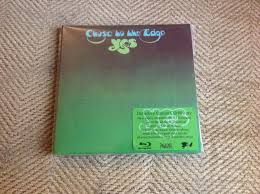
On the 2003 remaster of Fragile and newly re-released on the 2013 5.1 Surround sound edition (DVD-A and Blu-Ray) of the Close to The Edge package remixed by Steven Wilson there is the full version of the cover of Simon & Garfunkel’s “America” which is the probably the most intensified cover songs of Yes’ entire career other than the neat Beatles and Byrds covers the first two albums. (Check out the live box set, Yes..and the Word is Live released on Rhino Records in 2005 for more cool covers of Little Rascals and Beatles songs) – and sadly it wasn’t included in the recent 2014 live bill (would worked great for a second encore, guys. Seriously)
This version is worth a repeated listen or two simply because:
The song was rearranged by the progressive rock band Yes in 1971. Yes added elements typical to progressive rock, such as changes in time signature and long instrumental segments, while dropping the song’s original repeat and fade ending. At one point bassist Chris Squire quotes “America” from West Side Story in the intro. The complete Yes version clocks in at ten and a half minutes. This recording first appeared in 1972 on the sampler album The New Age of Atlantic and was later included on the compilation album Yesterdays in 1975, the box set In a Word: Yes (1969–) in 2002, and on the 2003 re-issue of their album Fragile. An edited version of this recording lasting 4 minutes was released as a single and hit #46 on the pop chart. It also appeared on the Yesyears boxed set and its condensed version Yesstory, along with The Ultimate Yes: 35th Anniversary Collection. The edited version was also included as a bonus track on the re-issue of Close to the Edge. A live version of the song was included on 1996’s Keys to Ascension.
What I want to mention is that it sounds absolutely gorgeous coming out of six surround speakers mounted in Harry Perzigian’s Brentwood condo ceiling. Wilson pushed up every fader possible to hear WHAT the hell was going on in the background with Rick Wakeman’s electric piano buried in the mix. Well, not anymore it’s not as well as Steve Howe’s slingshot guitar towards the end of the long solo panning across the room.
The album’s sleeve was designed and illustrated by English artist Roger Dean, who had also designed the cover for Fragile (1971). It marks the first use of the Yes “bubble” logo. Some of the photography used was shot by Martyn Adelman who had played in The Syn with Squire. On reflection of its artwork, Dean said: “There were a couple of ideas that merged there. It was of a waterfall constantly refreshing itself, pouring from all sides of the lake, but where was the water coming from? I was looking for an image to portray that”. The answer to that deft defying cliffhanger would later continue on the triple lp live set entitled ‘Yessongs” to be released in May of 1973.
In 1987, Close to the Edge was reissued by Atlantic Records on compact disc in the United States and Europe. Another issue of the album was digitally remastered by Joe Gastwirt in 1994. In 2003, the album was reissued again on disc in an expanded and remastered edition by Rhino and Elektra Records. Included were two previously unreleased tracks: an alternate version of “And You and I”, an early run-through of “Siberian Khatru”, and Yes’s 1972 single “America” with its b-side, an edit of “Total Mass Retain”.
A promotion-only version of the LP was distributed to US radio stations that featured the title track split into shorter segments. This was done to increase radio exposure as most radio stations did not want to air an 18-minute song. Most of the segments were in the range of 3 to 5 minutes and all were marked on the record to assist disc jockeys.
In 2013, two new remasters of the album were released. Steve Hoffman of Audio Fidelity Records conducted a remastering in both CD and Super Audio CD formats. For the Panegyric label, Steven Wilson used the original multi-track recordings to produce a “2013 stereo mix”, a 5.1 surround sound mix, and an “original stereo mix” from a flat transfer of the LP, in both a CD and DVD-Audio and CD and Blu-ray Disc package. Bonus tracks include single edits, an early rough mix of “Close to the Edge”, and instrumental versions of the album’s three tracks. On 2 December that year internationally & later on 24 December in the US, the 2003 remaster was reissued as a part of the box set The Studio Albums 1969-1987.
Once recording for the album was complete, Bruford left the band on 19 July 1972 to join King Crimson. His replacement was Alan White of the Plastic Ono Band and part of Terry Reid‘s group. As he played on Close to the Edge but left before the subsequent tour, Bruford was contractually obliged to share album royalties with White, and claims that Yes manager Brian Lane enforced a compensation payment of $10,000 from him. White had one full rehearsal with the band before the tour, which saw the band play a total of 95 concerts in the US, Canada, the UK, Japan and Australia.
From this moment on, I don’t any repressed memories of those early seventies. 1972 was not such a bad year for my fundamental growth. Oh sure, there were spurts of right upper cuts from my stepfather when I was bold enough to wax my eight year old political stance (even Richard M. Nixon was no friend of mine when I was just starting out in the 3rd grade) that I wished out loud that I was old enough to vote for George McGovern and some schmoe should put a freaking lead capsule right into Nixon’s throat right there and then. When I had cajoled this out loud to some other kids outside during lunchtime recess – some little fat fuck named Anthony with warts all over his face and hands ran up and stabbed me right in the palm of my hand with a No 2 pencil. My mom had to check me in the hospital that day to make sure I didn’t get any lead poisoning. Did you know that Superman could even die from lead poisoning?
The syndicated sci-fi tv shows such as U.F.O and Starlost (a lost child abandoned by Unca Harlan Ellison ) were on my tv hit parade back in those days.
I was in love with this facsimile of a newspaper back then too. The Monster Times.
Comic books were only 20 cents. Jack Kirby’s Kamandi, the Last Boy on Earth was a perennial favorite of mine along with Luke Cage, Hero For Hire and Combat Kelly & the Deadly Dozen.
It was also the dawn of days of prepubescent chubbies when I used to love to look up the mini-skirt of my third grade teacher, Miss Kirkpatrick during class nap time while my classmates and I were sacked out on blankets and pillows on the floor as she would tiptoe through us. But I had to pretend I he was asleep for the entire time as she walked by and then squinting one eye to achieve total mass retain of her tan pantyhose and whatever brightly colored frilly she was wearing underneath them that day. This was a skill that could not be simply be applied anywhere else and to think, a skillful espionage tactic that he once learned way back in the third grade can still be utilized on the gritty streets of Los Angeles to this very day (plenty useful for glass elevators and shopping mall escalators too).
High vibration go on looking up the skirt of my third grade teacher during early afternoon naptime.
Ah, to be young and tactile again. It would so invigorating to turn back the hands of time once again. Believe it or not – Yes, Close to the Edge was not an album that I eased into right away, it was another of one of those record club orders that got you 11 albums for a dollar back in the 77-78 era while I was still in middle school. (one trick I learned from grade school older classmates – bucking the system of the record club. Send a dollar and have it mailed to your neighbor’s address rather than your own – because who actually goes through their obligation deal of buying 8 additional records at regular price?) maybe because I was spoiled with Tales From Topographic Oceans and Relayer of which I will get into hot and heavy next week.
Again, like the 5.1 surround sound remix of the Yes Album also carving a niche in Steven Wilson’s finely tuned ear belt, this is another new-found appreciation for the work. My late best friend, Harry Perzigian said this was the album that got him to worship the band and we had listened to this edition for the first time on his state of the art stereo (his dvd player was particularly novel for its fantastic dts playback) and interestingly enough he really enjoyed the job that Wilson had done, but thought that the studio run through should have been kept shrouded in mystery. “There’s a reason why bands keep certain thing unreleased (yeah, explain that to the Paris sessions), there’s a lot of flubs on it. Anderson didn’t even have all the lyrics to sing yet. It’s exactly the meaning of having a skeleton in your closet.”
And when Jon Anderson is heard belting out on the studio run through during the opening of the second movement of the title track:
“Total Mass Sustain”
We both looked at each other with what the fuck looks on our faces.
Until Harry broke into a snicker and said to me: “jeez – why didn’t he just say Total Mass Shitstain, it would’ve sounded easier.”
Also of note, in the first movement of Close to the Edge, The Solid Time of Change, …there are pauses in the music when everything cuts loose. I mean a couple of dead stop seconds leaving room I guess for Anderson to drop in his traditional chants of DA DA.
Next Monday: memories of Laguna Beach in the summer of 1978 where I first embarked upon my spiritual journey of Tales From Topographic Oceans, although five years later than its’ original release.
